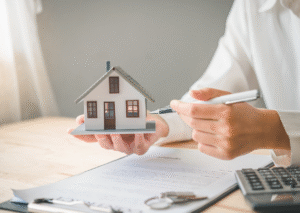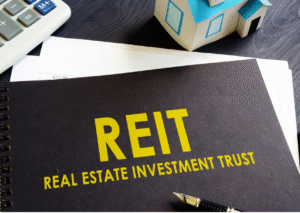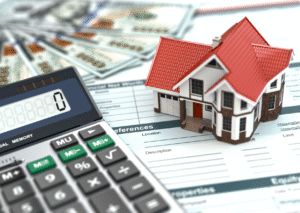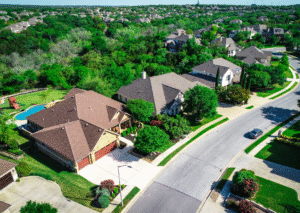What Are Real Estate Rehab Loans?
Real estate rehab loans are specialized financing designed to help investors purchase and renovate non-owner-occupied properties. These loans cover not just the acquisition price but also the cost of repairs and upgrades needed to bring a property up to market standards. Once the renovations are complete, investors often resell the property for profit or refinance into long-term financing.
Rehab loans are critical for investors looking to unlock potential in undervalued properties while building sustainable wealth through real estate.
Why Do Investors Use Rehab Loans for Property Flipping?
Flipping requires significant upfront capital, and rehab loans give investors the leverage they need to act quickly. With the right financing partner, investors gain access to:
- Speed in acquisition – Move fast on distressed or undervalued deals before competitors.
- Comprehensive coverage – Finance both purchase and renovation costs under one solution.
- Scalable strategies – Use borrowed funds strategically to expand your portfolio without tying up personal capital.
For many investors, rehab loans are the gateway to transforming opportunity into profit.
How Do Rehab Loans Differ from Traditional Mortgages?
Unlike traditional mortgages, which are designed for move-in ready homes, rehab loans are built for investment properties requiring improvements.
Key differences include:
- Loan purpose – Rehab loans combine acquisition and renovation funding, while standard mortgages cover purchase only.
- Repayment terms – Rehab loans are shorter, aligning with flipping timelines, while mortgages stretch over decades.
- Investor focus – Lenders specializing in real estate financing solutions understand the unique risks and rewards of investment projects.
This makes rehab loans a better fit for investors who work with distressed or value-add properties.
What Types of Rehab Loan Options Can Investors Explore?
Investors have access to several financing paths depending on their goals:
- Fix & Flip Loans – Short-term capital for buying, renovating, and selling homes quickly.
- Buy & Hold Mortgages – Long-term financing for rehabbing and keeping rental properties.
- BRRRR Financing (Buy, Rehab, Rent, Refinance, Repeat) – A cycle that allows investors to recycle capital across multiple deals.
- Cash-Out Refinance – Use equity from one property to fuel new rehab projects.
- DSCR Loans – Debt Service Coverage Ratio loans based on property income, not personal income.
- New Construction Loans – For major builds or additions that expand investment opportunities.
These loan structures, when used strategically, help investors tailor financing to their specific business model.
How Do Lenders Evaluate Eligibility for Rehab Loans?
Approval for rehab loans is based not only on the investor’s profile but also on the property’s potential value after repairs, or ARV (After-Repair Value). Common factors include:
- Investor creditworthiness – Higher credit scores typically secure better terms.
- Down payment requirements – Usually 10–25% depending on the loan type.
- Rehab plans – Detailed budgets and renovation timelines give lenders confidence.
- Projected property income – Especially relevant for DSCR loans.
The right financing partner provides flexible underwriting and creative solutions tailored to investors, rather than rigid standards.
What Are the Core Benefits of Rehab Loans?
The value of rehab loans extends beyond immediate access to capital. They also provide:
- Portfolio growth – Leverage borrowed funds to scale quickly.
- Equity creation – Renovations increase property value and profit margins.
- Cash flow opportunities – Rehabbed properties can become profitable rentals.
- Market adaptability – Different loan products fit short-term flips or long-term holds.
When aligned with strategies like BRRRR or cash-out refinancing, rehab loans become powerful tools for wealth creation.
What Risks Should Investors Keep in Mind?
As with any investment, risks exist:
- Renovation delays or cost overruns can reduce returns.
- Market volatility may lower resale or rental values.
- Higher short-term interest rates can strain margins if projects extend too long.
- Overleveraging could create financial stress if multiple projects stall.
Mitigating these risks requires careful due diligence, realistic budgeting, and working with a financing partner who understands the investor’s long-term strategy.
How Can Rehab Loans Fit into a Broader Investment Strategy?
Rehab loans are not isolated tools—they connect with other real estate investment strategies:
- Flipping profits into buy & hold mortgages for rental income.
- Recycling equity through cash-out refinancing to fund more projects.
- Using BRRRR financing to multiply capital across multiple properties.
- Balancing short-term profits with DSCR loans and new construction loans for long-term growth.
A well-rounded strategy often blends multiple financing solutions to maximize opportunities while minimizing risk.
Why Should Investors Partner with Experienced Financing Specialists?
The real estate investment landscape is complex, and the difference between success and setbacks often comes down to choosing the right financing structure. Expert guidance ensures that investors have access to tailored solutions, from fix & flip loans to business credit advisory, that align with their unique goals.
Working with a trusted partner provides not just financing but also growth and development insights that help investors scale with confidence.
How Can No Limit Investments Help You Access the Right Rehab Loan?
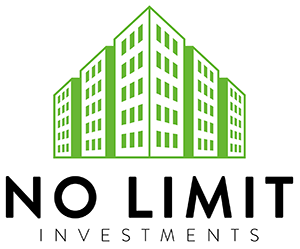
Are you ready to unlock the potential of your next property flip? No Limit Investments specializes in real estate financing solutions designed for investors who want to build and scale. Their services include:
- Fix & flip loans to fund profitable flips
- Buy & hold mortgages for long-term rental wealth
- BRRRR financing to recycle capital across multiple properties
- Cash-out refinance to unlock equity for future deals
- DSCR loans tailored to property cash flow
- New construction loans for expansion opportunities
- Comprehensive real estate financing solutions to cover every investment stage
Beyond financing, they also provide business credit facilities and growth advisory services that help investors strengthen their financial foundation. This combination of lending expertise and strategic guidance ensures you have the right tools for success.
Final Thoughts
Real estate rehab loans remain one of the most effective ways to transform undervalued properties into profitable investments. They provide the capital for acquisition, renovation, and long-term portfolio strategies while aligning with broader financing tools like BRRRR, DSCR loans, and cash-out refinances.
When paired with expert support and tailored services from No Limit Investments, these loans can fuel your property flipping journey and unlock scalable, lasting growth. Call now!
Works Cited
- Federal Housing Administration. “203(k) Rehabilitation Mortgage Insurance.” HUD.gov, U.S. Department of Housing and Urban Development, www.hud.gov/program_offices/housing/sfh/203k/203k–df. Accessed 4 Oct. 2025.
- Joint Center for Housing Studies of Harvard University. “The State of the Nation’s Housing 2024.” Harvard University, 2024, www.jchs.harvard.edu/state-nations-housing-2024. Accessed 4 Oct. 2025.
- National Association of Realtors. “Remodeling Impact Report.” NAR Research, 2023, www.nar.realtor/research-and-statistics/research-reports/remodeling-impact. Accessed 4 Oct. 2025.
- U.S. Census Bureau. “Quarterly Residential Vacancies and Homeownership, Second Quarter 2024.” Census.gov, 2024, www.census.gov/housing/hvs/index.html. Accessed 4 Oct. 2025.
Frequently Asked Questions
What is the difference between a rehab loan and a traditional mortgage?
A rehab loan funds both the purchase and renovation of an investment property, while a traditional mortgage typically only covers the purchase of a move-in-ready home. Rehab loans are designed for non-owner-occupied properties, making them ideal for investors who want to flip or hold rentals.
Can I use a rehab loan if I want to keep the property as a rental?
Yes. Many investors use rehab loans to acquire and renovate a property, then transition into a buy & hold mortgage or a BRRRR financing strategy to build long-term rental income.
How much money do I need to qualify for a rehab loan?
Down payment requirements usually range from 10–25% depending on the loan type. Lenders also consider credit score, investor experience, and the property’s after-repair value (ARV). Flexible underwriting is available through real estate financing specialists.
Are rehab loans only for experienced investors?
Not necessarily. While prior experience helps, new investors can also qualify if they present a solid renovation plan and budget. Partnering with experts like No Limit Investments provides additional guidance and financing options tailored to different experience levels.
How can No Limit Investments support me beyond rehab loans?
In addition to real estate financing solutions like fix & flip loans, BRRRR financing, and DSCR loans, No Limit Investments also provides business credit facilities and growth advisory services. This means investors get both the funding and the strategic guidance needed to scale with confidence.


